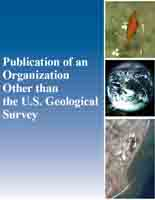Horizontal transport of Picture Gorge Basalt magma through the Monument Dike Swarm determined by magnetic fabric
Links
- More information: Publisher Index Page (via DOI)
- Open Access Version: Publisher Index Page
- Download citation as: RIS | Dublin Core
Abstract
Flood basalts of the mid-Miocene Columbia River Basalt Group (CRBG) cover 210,000 km2 of Washington, Oregon, and Idaho. The source of CRBG melt is debated; widely spaced feeder dike swarms can be projected toward hypothetical sources near the Oregon-Idaho border. In this study, we use anisotropy of magnetic susceptibility (AMS) to track magma flow in the Monument dike swarm (MDS), the feeder dikes of the Picture Gorge Basalt (PGB). This small formation of the main-phase CRBG eruptions allows us to explore in detail the localized dynamics of a large igneous province feeder system, with implications for the larger CRBG picture. We measured the magnetic fabric of 205 oriented paleomagnetic specimens subsampled from 97 samples collected from 15 dikes of the MDS. Thermal demagnetization and hysteresis loops show that the magnetic minerals are a mixture of single domain and multidomain sized titanomagnetites. At three dikes, the paleodepth of sampling was determined to be shallow (<350 m). Magma flowing through dikes has been shown—in most cases— to acquire an anisotropic magnetic fabric with an AMS ellipsoid minimum axis perpendicular to the wall and maximum axis aligned in the direction of flow. Of 15 dikes, 12 show horizontal flow directions in the plane of the dike. Only one dike displayed imbricated fabrics, showing westward flow away from the Oregon-Idaho border. We conclude that magma flow in the MDS was sub-horizontal from a distal source.
Study Area
| Publication type | Article |
|---|---|
| Publication Subtype | Journal Article |
| Title | Horizontal transport of Picture Gorge Basalt magma through the Monument Dike Swarm determined by magnetic fabric |
| Series title | Geochemistry, Geophysics, Geosystems |
| DOI | 10.1029/2024GC012078 |
| Volume | 26 |
| Issue | 5 |
| Publication Date | May 06, 2025 |
| Year Published | 2025 |
| Language | English |
| Publisher | American Geophysical Union |
| Contributing office(s) | Geology, Minerals, Energy, and Geophysics Science Center |
| Description | e2024GC012078, 15p. |
| Country | United States |
| State | Oregon |


